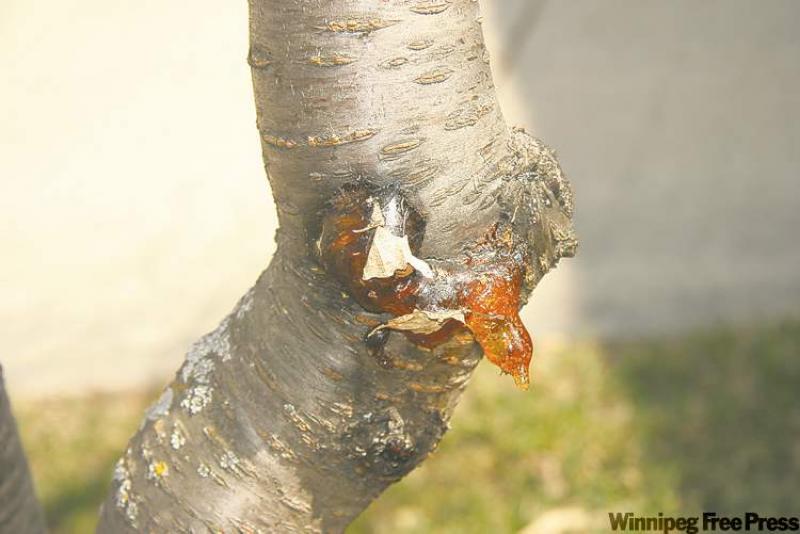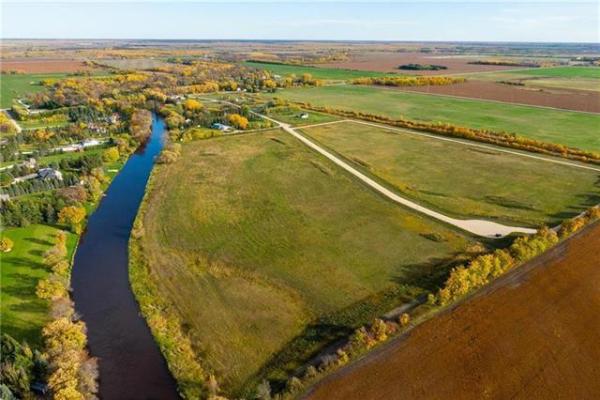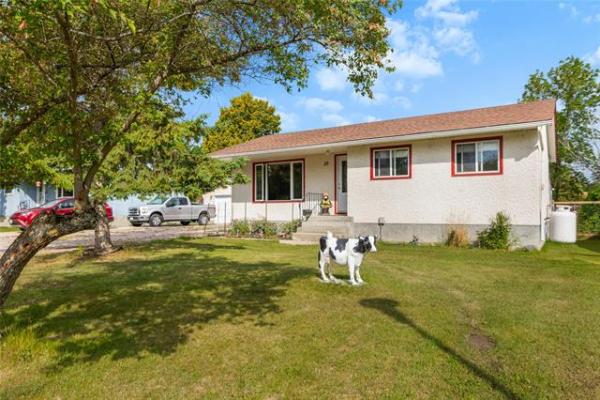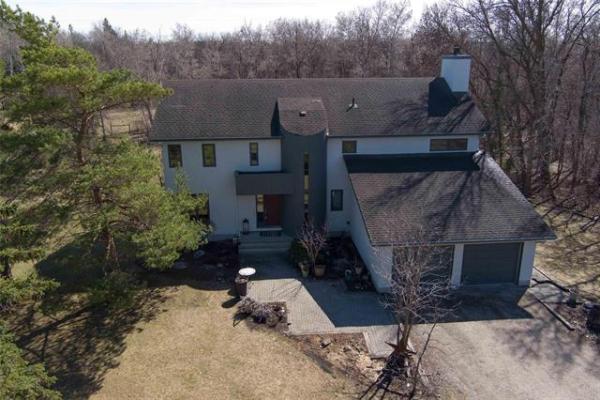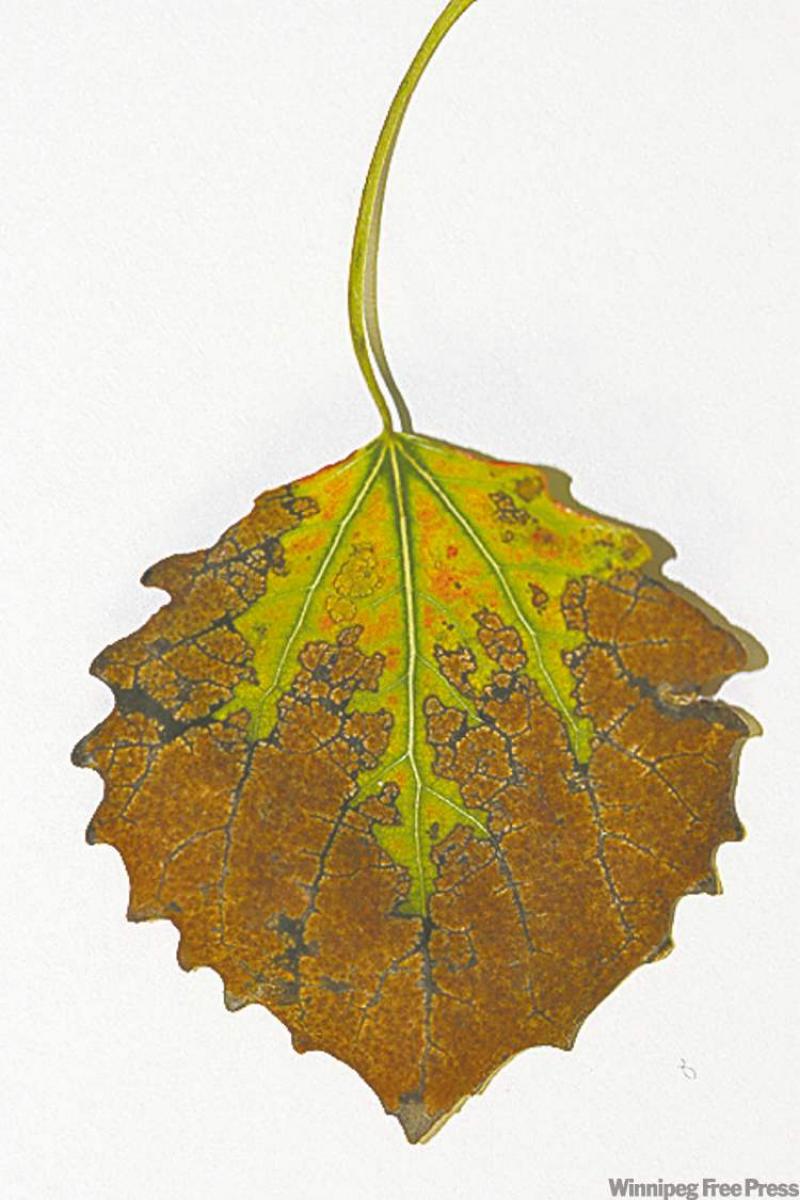
I get many questions about why leaves discolour early and fall from the tree or shrub well before the fall season.
QUESTION: My Amur choke cherry (or apple, pear, cherry, plum, apricot, Russian olive, Siberian elm, willow, rose, Amur maple, birch, ornamental crab apple, or European cranberry) is losing its leaves. They turn yellow and have brown spots and blotches on them and fall from the tree during the summer. What's wrong with my tree?
ANSWER: This is not an easy question to answer. I have seen many tree and shrub species fitting this description of a problem. The cause or causes are the not always the same in each situation. Many of these trees may have a serious disease such as fruit tree black rot fungal canker. Cankers are openings in the bark.
These diseases have very complex life cycles and have the scientific names Botryosphaeria and Botryodiplodia among others. They infect dozens of woody plant species such as the ones listed above. Botryosphaeria has devastated many apple trees in the Winnipeg area. Most homeowners are told erroneously that their dying fruit trees have winter kill. Severe winter kill may or may not be part of the problem.
On many thin barked fruit trees such as Amur cherry, young fruit trees and Amur maple, I usually see a crack in the bark or a hollow opening at the base of the trunk. Typically these trees are surrounded by grass. The injury arises from lawn mower or weed eater damage. The canker fungus spores enter the tree through these damaged areas. Wet soil and cool wet weather encourages these canker diseases and subsequent infection of leaves. Best to remove the grass.
Most of these trees and shrubs listed can also suffer from a nutrient deficiency called chlorosis usually related to a deficiency of available nitrogen and iron in the soil. The leaves turn yellowish green with prominent green veins in late spring and summer. Leaves can pick up a number of leaf spot and leaf blotch diseases such as frog eye leaf spot and varieties of anthracnose leaf diseases. I discussed these problems in my last column.
Treatment:
Remove completely all dead branches. If this is done in spring or summer, sterilize your pruning tools after each cut with bleach mixed in water or with methyl hydrate or with rubbing alcohol. Without exception! Seal cut branches immediately with a tar-based material such as tree pruning seal or tree wound paste. Tree pruning paint is not recommended as it is ineffective in keeping diseases out of the branch cuts.
Canker fungus diseases are not curable especially in the advanced stages. Once the disease enters the trunk the tree loses vigour and slowly (in most cases) dies. Proper aeration and fertilization of the entire root system can slow down the disease. The feeding roots extend typically about half the height of the tree from the trunk in all directions where possible. In my next article I will describe how one can fertilize trees using organic and inorganic fertilizers.
The leaves, twigs and branches can be sprayed with dormant lime sulfur fungicide in April before the buds open to control minor leaf spot and twig blight diseases. A series of two sprays with copper sulfate fungicide 10 days apart in late May to mid-June is often helpful especially in controlling leaf and fruit diseases.
In spite of all your treatments, if the disease is advanced in its development the tree will die anyway. The earlier the treatment process starts, the better the chance of saving the tree. Sound familiar?
Michael Allen is a consulting urban forester, certified ISA arborist and owner of Viburnum Tree Experts. He provides advisory services on tree and shrub problems through home visits and also gives many tree-care and pruning courses. He can be contacted by calling 831-6503 or emailed at viburnumtrees@shaw.ca. You can also mail questions to Michael Allen, c/o Newsroom, Winnipeg Free Press, 1355 Mountain Ave., Winnipeg, MB, R2X 3B6. His website is: www.treeexperts.mb.ca

